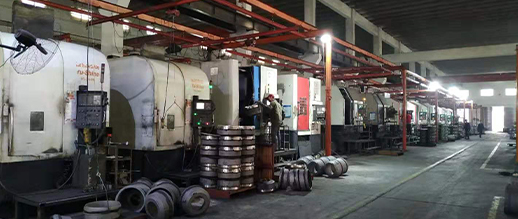
-
 Afrikaans
Afrikaans -
 Albanian
Albanian -
 Amharic
Amharic -
 Arabic
Arabic -
 Armenian
Armenian -
 Azerbaijani
Azerbaijani -
 Basque
Basque -
 Belarusian
Belarusian -
 Bengali
Bengali -
 Bosnian
Bosnian -
 Bulgarian
Bulgarian -
 Catalan
Catalan -
 Cebuano
Cebuano -
 Corsican
Corsican -
 Croatian
Croatian -
 Czech
Czech -
 Danish
Danish -
 Dutch
Dutch -
 ພາສາອັງກິດ
ພາສາອັງກິດ -
 Esperanto
Esperanto -
 Estonian
Estonian -
 Finnish
Finnish -
 French
French -
 Frisian
Frisian -
 Galician
Galician -
 Georgian
Georgian -
 German
German -
 Greek
Greek -
 Gujarati
Gujarati -
 Haitian Creole
Haitian Creole -
 hausa
hausa -
 hawaiian
hawaiian -
 Hebrew
Hebrew -
 Hindi
Hindi -
 Miao
Miao -
 Hungarian
Hungarian -
 Icelandic
Icelandic -
 igbo
igbo -
 Indonesian
Indonesian -
 irish
irish -
 Italian
Italian -
 Japanese
Japanese -
 Javanese
Javanese -
 Kannada
Kannada -
 kazakh
kazakh -
 Khmer
Khmer -
 Rwandese
Rwandese -
 Korean
Korean -
 Kurdish
Kurdish -
 Kyrgyz
Kyrgyz -
 Lao
Lao -
 Latin
Latin -
 Latvian
Latvian -
 Lithuanian
Lithuanian -
 Luxembourgish
Luxembourgish -
 Macedonian
Macedonian -
 Malgashi
Malgashi -
 Malay
Malay -
 Malayalam
Malayalam -
 Maltese
Maltese -
 Maori
Maori -
 Marathi
Marathi -
 Mongolian
Mongolian -
 Myanmar
Myanmar -
 Nepali
Nepali -
 Norwegian
Norwegian -
 Norwegian
Norwegian -
 Occitan
Occitan -
 Pashto
Pashto -
 Persian
Persian -
 Polish
Polish -
 Portuguese
Portuguese -
 Punjabi
Punjabi -
 Romanian
Romanian -
 Russian
Russian -
 Samoan
Samoan -
 Scottish Gaelic
Scottish Gaelic -
 Serbian
Serbian -
 Sesotho
Sesotho -
 Shona
Shona -
 Sindhi
Sindhi -
 Sinhala
Sinhala -
 Slovak
Slovak -
 Slovenian
Slovenian -
 Somali
Somali -
 Spanish
Spanish -
 Sundanese
Sundanese -
 Swahili
Swahili -
 Swedish
Swedish -
 Tagalog
Tagalog -
 Tajik
Tajik -
 Tamil
Tamil -
 Tatar
Tatar -
 Telugu
Telugu -
 Thai
Thai -
 Turkish
Turkish -
 Turkmen
Turkmen -
 Ukrainian
Ukrainian -
 Urdu
Urdu -
 Uighur
Uighur -
 Uzbek
Uzbek -
 Vietnamese
Vietnamese -
 Welsh
Welsh -
 Bantu
Bantu -
 Yiddish
Yiddish -
 Yoruba
Yoruba -
 Zulu
Zulu
drum brake drawing
Understanding Drum Brake Design An Engineering Perspective
Drum brakes are a crucial component in the braking systems of many vehicles, particularly older models and certain motorcycles. Their design is both intricate and efficient, combining various mechanical principles to ensure reliability and safety in stopping a vehicle. This article aims to provide an insight into the drawing and design of drum brakes, outlining their components, workings, and significance in automotive engineering.
The drum brake system consists of several key components, each serving a distinct purpose. The primary elements include the brake drum, brake shoes, wheel cylinder, return springs, and the backing plate. The brake drum acts as a housing for the brake shoes and rotates with the wheel. It is typically made of cast iron or aluminum alloy, chosen for its strength and heat dissipation properties. The interior surface of the drum is machined to precise tolerances to ensure a consistent and smooth contact with the brake shoes.
Understanding Drum Brake Design An Engineering Perspective
The wheel cylinder plays a vital role in the drum brake system. When the driver applies the brake pedal, hydraulic pressure is generated in the brake lines, forcing the piston inside the wheel cylinder to extend. This action pushes the brake shoes outward against the inner surface of the drum, generating the necessary friction to slow or stop the vehicle. The design of the wheel cylinder ensures a snug fit and a robust seal, preventing fluid leakage and maintaining consistent braking performance.
drum brake drawing

To ensure that the brake shoes return to their original position when the brake is released, return springs are utilized. These springs are mounted on the backing plate and provide the necessary tension to pull the shoes back after braking. This functionality helps prevent drag, which could lead to overheating and excessive wear of the braking components.
The backing plate itself serves as the foundation for the drum brake assembly. It holds all the components in place and provides strength and stability. The design of the backing plate is critical as it must withstand the forces exerted during braking while also allowing for easy assembly and maintenance.
In terms of design considerations, engineers must account for several factors when developing drum brake systems. These include thermal management, material selection, weight reduction, and ease of manufacturing. Effective heat dissipation is crucial as brakes generate significant heat during operation. Hence, the materials and design must facilitate cooling to prevent brake fade.
Moreover, the evolution of drum brake designs has seen innovations aimed at improving performance and safety. Modern vehicles often utilize advanced materials and coatings to enhance the durability and effectiveness of drum brakes. Additionally, the integration of anti-lock braking systems (ABS) has revolutionized braking technology, providing enhanced control and stability, particularly in slippery conditions.
In conclusion, the drawing and design of drum brakes involve a comprehensive understanding of mechanical engineering principles. Each component plays a vital role in the overall functionality of the braking system. As automotive technology continues to advance, the design of drum brakes will also evolve, ensuring that they remain a dependable choice for vehicle safety and performance. Understanding this design not only enhances our appreciation of automotive engineering but also underscores the importance of maintaining these critical systems for safe driving.
-
Rear Drum Brakes Maintenance Tipsຂ່າວAug.04,2025
-
Key Components Affecting Brake Drum Functionຂ່າວAug.04,2025
-
Important Inspection for Truck Drum Brakeຂ່າວAug.04,2025
-
How to Prepare for Changing Rear Drum Brakesຂ່າວAug.04,2025
-
Essential Tools for Cleaning Drum Brakes Properlyຂ່າວAug.04,2025
-
Brake Drum Function Guideຂ່າວAug.04,2025
-
Safety Features of Red Brake Drumsຂ່າວAug.01,2025
